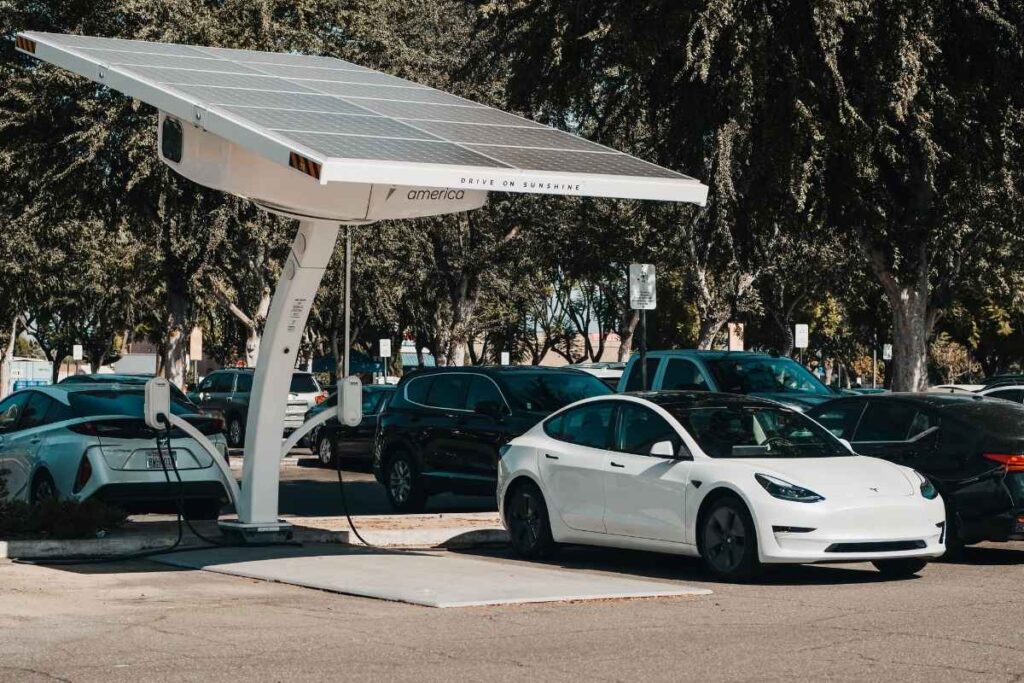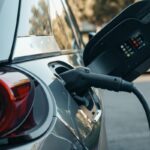Let’s talk about trust issues. Specifically, the trust issues you develop the first time your EV’s built-in navigation system confidently guides you to a “charging station” that turns out to be a single, broken charger in a dark, sketchy parking garage.
Good times.
I confess, when I first got my EV, I figured the car’s map was all I needed. “It’s a smart car!” I thought. “It knows things!” Oh, my sweet, summer child-self. I was so naive. The native navigation is fine for getting you from A to B, but for the lifeblood of EV ownership—charging—you need to call in the special forces.
You need third-party apps.
Because the difference between a smooth, breezy road trip and a rage-fueled, anxiety-nightmare is very often the quality of the app on your phone. It’s your map, your crystal ball, and your support group all rolled into one. After way too much trial and error, these are the best apps for finding EV charging stations that have earned a permanent spot on my home screen.
The EV Driver’s App Cheat Sheet
| App Name | The Vibe | Best For… | Killer Feature |
| PlugShare | The EV Bible | Finding every charger & checking its status. | User check-ins and photos. |
| A Better Routeplanner (ABRP) | The Master Planner | Planning long-distance road trips. | Hyper-detailed route calculation. |
| Electrify America | The Network Kingpin | Using the EA network (obviously). | In-app payment & session monitoring. |
| EVgo | The Reliable Partner | Finding reliable (but pricey) chargers. | Reserving a charger in advance. |
| ChargePoint | The Ubiquitous One | Finding chargers at work, apartments, & shops. | “Waitlist” for busy stations. |
| Tesla | The Walled Garden | Tesla drivers (and now others at Magic Docks). | Seamless “plug and charge” experience. |
| Chargeway | The Visual Learner | Understanding charging speeds easily. | Color-coded, numbered speed system. |
| ChargeHub | The All-in-One | A solid alternative to PlugShare. | Good filters and clean interface. |
H2: So, Which Apps Do You Actually Need?
Okay, that’s a lot of logos. You don’t need all eight. But you probably need at least three. Let’s dig into why.

H3: 1. PlugShare: The Non-Negotiable
If you only download one app from this list, make it PlugShare. Period.
This isn’t just an app; it’s a community. It’s a crowd-sourced map of pretty much every single public plug on the continent. Its superpower is the user check-in. People leave reviews, post photos, and—most importantly—report if a charger is broken or offline. This feature has saved my bacon more times than I can count.
It’s the ground truth. While a network’s own app might say a station is “Available,” PlugShare comments will tell you, “Station 3 is derated to 50kW and the screen on Station 2 is busted.” That’s information worth its weight in gold. It’s one of the best apps for finding EV charging stations because it’s powered by real, frustrated (and sometimes happy) drivers like us.
H3: 2. A Better Routeplanner (ABRP): The Road Trip Guru
Man, ABRP is a beautiful, nerdy beast. It looks intimidating at first, with a million settings for tire degradation, payload weight, and reference consumption.
You can ignore most of that.
Just put in your car model, destination, and starting charge. ABRP will spit out a perfect route, telling you exactly which chargers to stop at, for how long, and what your battery percentage will be when you arrive. It accounts for elevation, temperature, and speed. It’s a game-changer for any drive longer than an hour and takes the guesswork out of an EV road trip.
H3: 3. The Big Network Apps (Electrify America, EVgo, etc.)
Okay, so why do you need the network’s own app if PlugShare shows you where the chargers are? Two reasons: payment and activation.
Puxa, it’s so much easier to start and pay for a charge directly within the Electrify America or EVgo app. You just pull up, plug in, and tap a button on your phone. No fumbling with credit cards in the rain. Plus, you can monitor your charging session from the app while you’re grabbing a coffee.
My pro-tip: Set up accounts with the major networks before you need them. Electrify America, EVgo, and ChargePoint are the big three. Having the apps downloaded and your payment info loaded will save you so much hassle on the road.
According to a 2024 J.D. Power study, “satisfaction with public Level 2 charging is at an all-time low,” and “one-fifth of all charging attempts fail.”
This isn’t meant to scare you. It’s meant to reinforce a point: reliability is everything. A great app helps you dodge those failed attempts by pointing you toward the good stations.
H4: But Wait, Doesn’t That Get Annoying? So Many Apps!
Yes. Yes, it does. It’s currently the wild west of EV charging. There’s no single, perfect solution.
In my opinion, this is the biggest growing pain of the EV transition. You have to be your own dispatcher, juggling multiple sources of information to get a clear picture. The dream is one app to rule them all, but we’re not there yet. This makes choosing from the best apps for finding EV charging stations less about finding the one and more about building your own personal toolkit.
H3: 4. Chargeway: For the Visual Thinkers
I have a soft spot for Chargeway. It tackles the most confusing part of EV charging—the speed—in a brilliantly simple way. Instead of talking about volts, amps, and kilowatts, it uses a simple number system (1-7) and colors. Green for slow AC, Blue for faster DC, etc.
It’s a fantastic educational tool for new EV owners who are still trying to figure out the difference between a CCS plug and a CHAdeMO. It helps you understand what kind of charger your car needs, not just where it is.
H3: 5. The Tesla App: The Velvet Rope Experience
If you have a Tesla, their app and Supercharger network are the gold standard. It’s seamless. The car knows where the chargers are, the app handles payment automatically, and the stalls are plentiful and reliable. It just works.
For the rest of us, Tesla is slowly opening its gates with “Magic Dock” enabled Superchargers. You’ll need the Tesla app to find and activate these. It’s worth downloading, as it opens up a whole new world of high-quality charging options.
H3: 6, 7, & 8. ChargePoint, ChargeHub, and the Others
ChargePoint is everywhere, especially for Level 2 charging at places like grocery stores, offices, and hotels. You’ll need their app to unlock these chargers, so it’s a must-have for daily driving. ChargeHub is a solid, clean competitor to PlugShare. I don’t use it as much, but some people prefer its interface. It’s good to have as a backup.
H2: The Final Takeaway: Build Your App A-Team
Look, you don’t need your phone’s screen to be a sea of charging app icons. The perfect setup, in my experience, is a three-pronged attack:
- ABRP for serious planning before you leave.
- PlugShare for on-the-ground intelligence and finding backups.
- The Network Apps (EA, EVgo, etc.) for the simple act of paying and charging.
Master these, and you’ll go from a nervous EV newbie to a seasoned road warrior. You’ll be the person your friends call for advice. It’s a good feeling.
FAQ: Your Nagging Questions About EV Charging Apps
1. Are all these apps free to use?
The apps themselves are free to download and use for basic functions. However, some, like A Better Routeplanner (ABRP), offer a premium subscription for advanced features like real-time weather, live traffic data, and deeper integration with your car.
2. Can I just use my car’s built-in navigation system?
You can, but you shouldn’t rely on it exclusively. In-car maps are often slower to update and lack the crucial real-time user feedback on whether a station is broken or crowded. Think of your car’s nav as a backup, not your primary tool.
3. Do I really need to have accounts with all the different charging networks?
While not strictly necessary, it makes life infinitely easier. Having accounts set up with your payment information pre-loaded allows you to use the “tap-to-charge” feature in the apps, saving you time and frustration compared to paying with a credit card at every stop.
4. What’s the single most important feature to look for in these apps?
Filters. The ability to filter the map by plug type (CCS, NACS, etc.), charging speed (kW), and network is critical. You don’t want your map cluttered with slow chargers or plugs that don’t fit your car. A good set of filters is the key to finding what you need, fast.
5. How do these apps know if a charger is occupied?
The network-specific apps (like Electrify America) get live data directly from the charger, so their status is usually accurate. Aggregator apps like PlugShare get this data from the network and supplement it with user check-ins, which can often be even more up-to-date.




